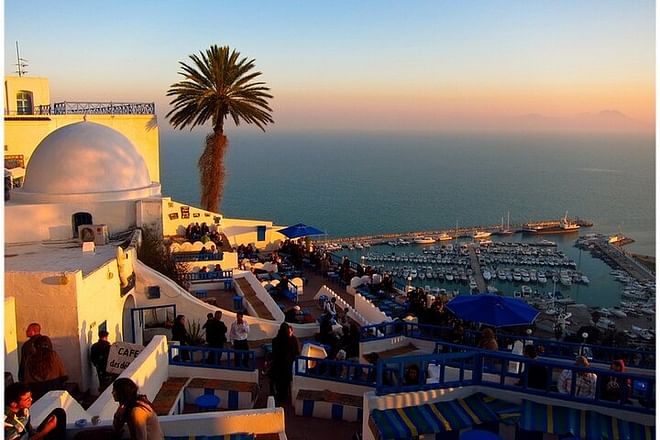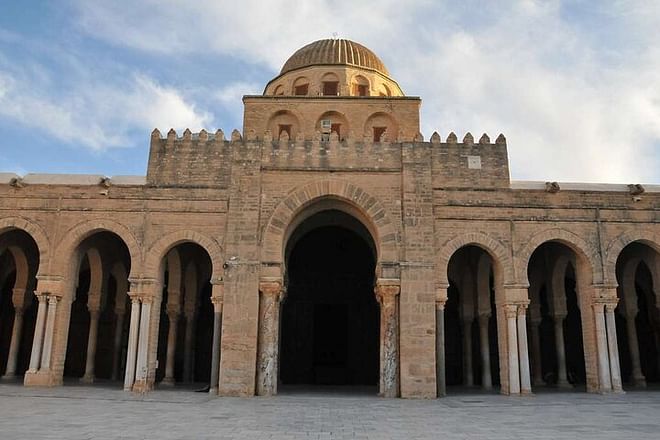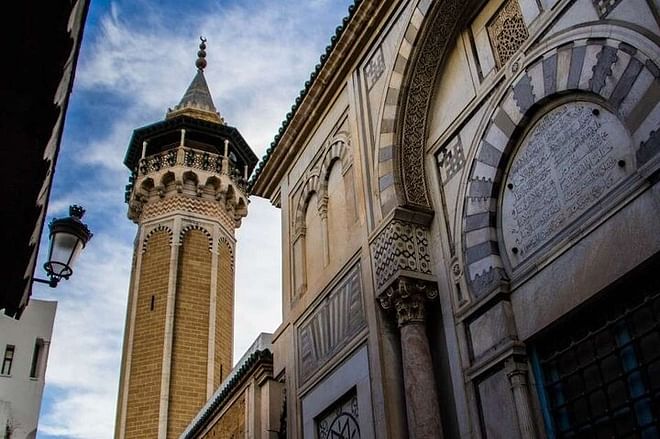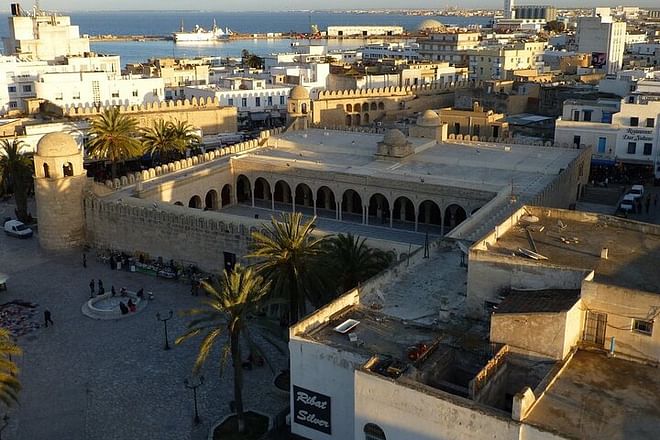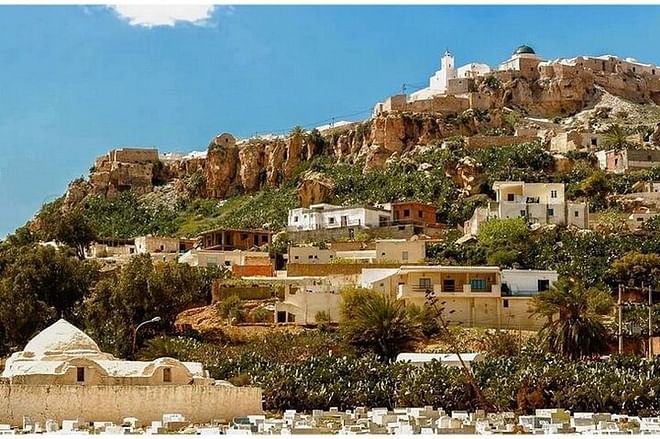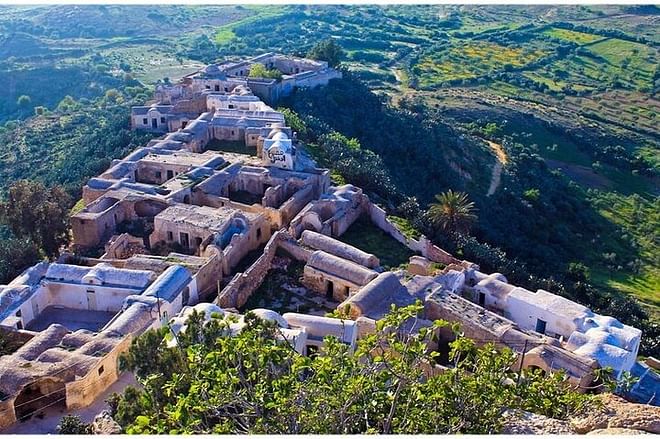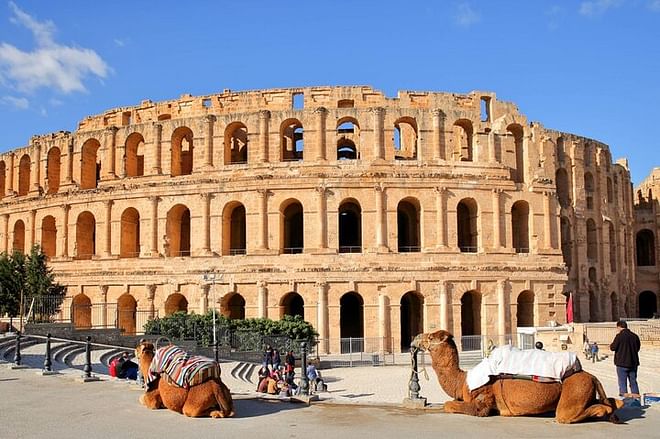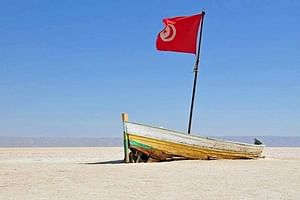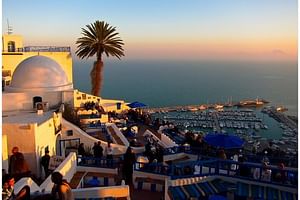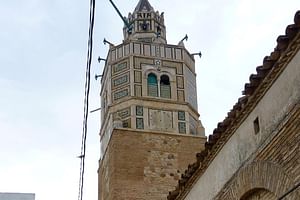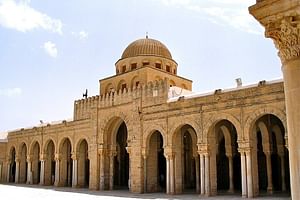-
Day 1
Medina of Tunis _Carthage _Sidi Bousaid
Medina of Tunis _Carthage _Sidi Bousaid
-
Day 1
this sprawling maze of ancient streets and alleys is one of North Africa's most impressive medieval medinas and one of Tunisia's great treasures. It's home to numerous covered souks selling everything...
this sprawling maze of ancient streets and alleys is one of North Africa's most impressive medieval medinas and one of Tunisia's great treasures. It's home to numerous covered souks selling everything from shoes to shisha, as well as bustling cafes, alleyways full of artisans at work, and residential areas punctuated by large, brightly painted doorways. Historic palaces, hammams, mosques and madrassas (schools for the study of the Koran) are scattered throughout, many are richly decorated with tiles, carved stucco and marble columns.
-
Day 1
this suburban district is renowned for the perpetual animation that reigns in its streets, all year round. The terraces of cafes and restaurants follow one another by the sea
this suburban district is renowned for the perpetual animation that reigns in its streets, all year round. The terraces of cafes and restaurants follow one another by the sea
-
Day 1
The archaeological site of Carthage is a site scattered in the current city of Carthage (Tunisia) and classified as a UNESCO World Heritage Site since 1979.
The archaeological site of Carthage is a site scattered in the current city of Carthage (Tunisia) and classified as a UNESCO World Heritage Site since 1979.
-
Day 1
With its distinctive blue and white colors, cobbled streets and breathtaking glimpses of azure waters, the cliff-top village of Sidi Bou Said is one of the most beautiful places in Tunisia. Its distin...
With its distinctive blue and white colors, cobbled streets and breathtaking glimpses of azure waters, the cliff-top village of Sidi Bou Said is one of the most beautiful places in Tunisia. Its distinctive architecture is a mix of Ottoman and Andalusian, the result of the influx of Spanish Muslims in the 16th century.
-
Day 1
No accommodation
Return to your hotel in Tunis or hammamet
No accommodation
Return to your hotel in Tunis or hammamet
-
Day 2
Kairouan_ El Jem amphitheater
Kairouan_ El Jem amphitheater
-
Day 2
The Great Mosque is the symbol of Kairouan. It is one of the oldest and most beautiful mosques in the world, one of the most impressive monuments in the whole Maghreb! Its religious prestige makes Kai...
The Great Mosque is the symbol of Kairouan. It is one of the oldest and most beautiful mosques in the world, one of the most impressive monuments in the whole Maghreb! Its religious prestige makes Kairouan the 4th holiest city in Islam. We admire its imposing minaret, its majestic courtyard with impressive dimensions, surrounded by superbly designed arcades and sheltering a sundial, and the high doors of richly carved cedar wood. They open onto the prayer rooms, adorned with dozens of marble columns. Built in 670, this architectural masterpiece, whose appearance evokes an adobe fortress, inspired other mosques in the Maghreb.
-
Day 2
The Aghlabid basins are a Tunisian historical monument located in Kairouan. Dating from the beginning of the second half of the 9th century and located outside the ramparts of the medina of Kairouan, ...
The Aghlabid basins are a Tunisian historical monument located in Kairouan. Dating from the beginning of the second half of the 9th century and located outside the ramparts of the medina of Kairouan, they are considered to be the most important hydraulic works in the history of the Muslim world.
-
Day 2
The medina of Kairouan is one of the most preserved and authentic in Tunisia, where you can take a look in the souks, taste the pastries of Kairouan "Les Mekroudhs" and its artisanal manufacture of ca...
The medina of Kairouan is one of the most preserved and authentic in Tunisia, where you can take a look in the souks, taste the pastries of Kairouan "Les Mekroudhs" and its artisanal manufacture of carpets.
-
Day 2
A visit to the Roman Colosseum, founded in the 3rd century AD and declared a World Heritage Site in 1972, which can accommodate 30,000 spectators, third in the Roman world by its size after that of Ro...
A visit to the Roman Colosseum, founded in the 3rd century AD and declared a World Heritage Site in 1972, which can accommodate 30,000 spectators, third in the Roman world by its size after that of Rome and that of Capua, the amphitheater of El Djem and the most impressive Roman monument in Africa.
-
Day 2
The Archaeological Museum of El Jem is a Tunisian museum located in the city of El Jem, the ancient Thysdrus. Founded in October 26, 1970, it was renovated in 2002.
The museum is located in the immed...
The Archaeological Museum of El Jem is a Tunisian museum located in the city of El Jem, the ancient Thysdrus. Founded in October 26, 1970, it was renovated in 2002.
The museum is located in the immediate vicinity of the first amphitheaters of ancient Thysdrus — the last, largest and best preserved is listed as a World Heritage Site.
The museum was built on the site of a Roman villa whose spatial organization it restores: a central courtyard surrounded by a peristyle – courtyard – which gives access to the rooms. There are exhibited objects – sculptures, mosaic paintings, ceramics, etc. – from excavation campaigns carried out at Thysdrus as well as in the vicinity of the city
-
Day 2
No accommodation
Return to your hotel in Tunis or hammamet
No accommodation
Return to your hotel in Tunis or hammamet
-
Day 3
Takrouna _ sousse _ monastir
Takrouna _ sousse _ monastir
-
Day 3
Takrouna oldest Berber village in Tunisia It is built on a rock culminating at 200 meters above sea level and dominating a surrounding plain, with a view of the Gulf of Hammamet, Hergla and Sousse to ...
Takrouna oldest Berber village in Tunisia It is built on a rock culminating at 200 meters above sea level and dominating a surrounding plain, with a view of the Gulf of Hammamet, Hergla and Sousse to the east, Jebel Zaghouan to the north and the plain of Kairouan to the south.
-
Day 3
Located in the Tunisian Sahel, the Medina of Sousse constitutes a homogeneous architectural ensemble that reflects Arab-Muslim town planning applied to a coastal city exposed throughout its history to...
Located in the Tunisian Sahel, the Medina of Sousse constitutes a homogeneous architectural ensemble that reflects Arab-Muslim town planning applied to a coastal city exposed throughout its history to piracy and dangers from the sea.
-
Day 3
It is the oldest and most important of the defensive works erected along the Maghreb coast by the Arab conquerors at the dawn of Islam. Founded in 796, this building underwent several renovations duri...
It is the oldest and most important of the defensive works erected along the Maghreb coast by the Arab conquerors at the dawn of Islam. Founded in 796, this building underwent several renovations during the medieval period. Initially, in the shape of a quadrilateral, it is made up of four buildings overlooking two interior courtyards. In addition to the small cells of the "warrior monks" who, while carrying out their military duties, devoted themselves to prayer and contemplation, the Ribat houses two prayer rooms, the most spacious of which now houses rare collectibles of worship. and medieval crafts. time. A hundred spiral steps provide access to the watchtower from the top of which luminous messages were exchanged at night with the towers of the neighboring ribats and which offers the visitor a superb view of the city of Monastir and its open sea.
-
Day 3
The marina is both a port of call, passage, wintering and regattas, made by the sailor.
The marina is both a port of call, passage, wintering and regattas, made by the sailor.
-
Day 3
No accommodation
Return to your hotel in Tunis or hammamet
No accommodation
Return to your hotel in Tunis or hammamet
